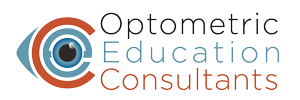
A 25 year old woman was involved in a minor automobile accident where she was hit by another driver. The accident was reportedly minor, with no initial injury to either driver, and both cars were able to be driven away. She felt that she experienced only a mild-to-moderate bump during the accident with no head trauma or loss of consciousness. However, immediately upon waking the next morning, though she had no physical pain, she experienced profound double vision.
She described the diplopia as vertical and worse at near. She had a distinct right hyper deviation which, on alternate cover test, worsened in left gaze and right head tilt. This was a signature motility of a cranial IV (trochlear) palsy.
A large percentage of CN IV palsies are congenital. With acute onset in older adults, there is frequently concurrent hypertension and/or diabetes. In isolated acquired cases often there will be a history of (head) trauma immediately preceding development of the CN IV palsy. The trauma need not be major as relatively minor injuries can precipitate CN IV palsy. In cases of longstanding decompensated CN IV palsy, the inciting trauma may have been many years antecedent. The fourth nerve is especially prone to trauma as it exits the brain stem and courses through the subarachnoid space. The most common causes of damage to the fourth nerve in this region are trauma and ischemic vasculopathy.
During the post-traumatic diplopic phase, temporary prisms or occlusion may resolve symptoms. A single injection of botulinum toxin A into the ipsilateral inferior oblique muscle can rapidly and safely resolve symptomatic diplopia while waiting for spontaneous recovery.
Despite the auto accident being apparently minor, the fact that she manifested a cranial neuropathy the next day was too coincidental to ignore. CT imaging ruled out a cerebral hemorrhage. The patient was temporarily patched to deal with the diplopia and eventually received a prismatic correction for the residual imbalance.
It is important to remember that trauma causing a CN IV palsy need not be directly to the head or even severe.
